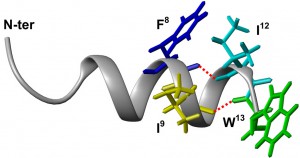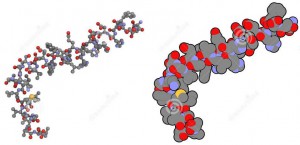1. A New Model for Analyzing Antimicrobial Peptides with Biomedical Applications (nato: Life And Behavioural Sciences, 343)
Editor: Czech Republic
This volume first presents evidence for the earthworm’s immune system; the results strongly suggest that certain molecules of the earthworm’s immune system may be exploited as natural antibiotics – thus the biomedical applications.
2. Amino Acids and Peptides
Editor: OL Mndzhoyan, TE Agadzhanyan, NN Fradkina, OM Avakyan, OS Noravyan
The approach is intended toencourage the reader to cross classical boundaries, such as in the laterchapter on the biological roles of amino acids and the design of peptide-based treatments.

3. Peptide and Protein Drug Analysis
Editor: Ronald E. Reid
Furthering efforts to simulate the potency and specificity exhibited by peptides and proteins in healthy cells, this remarkable reference supplies pharmaceutical scientists with a wealth of techniques for tapping the enormous therapeutic potential of these molecules-providing a solid basis of knowledge for new drug design.
4. HPLC of Peptides and Proteins: Methods and Protocols
Editor: Marie-Isabel Aguilar
The introduction of high-performance liquid chromatography (HPLC) to the analysis of peptides and proteins some 25 years ago revolutionized the biological sciences by enabling the rapid and sensitive analysis of peptide and protein structure through the exquisite speed, sensitivity, and resolution that can be easily obtained.
5. Peptide Synthesis Protocols
Editor: Michael W. Pennington, Ben M. Dunn
Peptide synthesis has emerged as one of the most powerful tools in biochemical, pharmacological, immunological, and so on.
6. Peptide Hybrid Polymers
Editor: Harm-Anton Klok, Helmut Schlaad
The construction of well-defined hybrid materials consisting of synthetic polymers and (poly)peptides or proteins has attracted much attention in recent years.

7. Antibacterial Peptide Protocols (Methods in Molecular Biology)
Editor: William Schaffer
The topic of this volume of Methods in Molecular Biology, the diverse methods used in research on antibacterial peptides, is thus quite timely. It is essential that reliable techniques and strategies be made available not only to those of us in the field, but also to the newcomers and researchers in complementary disciplines.
8. Peptide and Protein Design for Biopharmaceutical Applications
Editor: Knud Jensen
Peptides serve as effective drugs in the clinic today. However the inherent drawbacks of peptide structures can limit their efficacy as drugs. To overcome this researchers are developing new methods to create ‘tailor-made’ peptides and proteins with improved pharmacological properties.
9. Cell-Penetrating Peptides Methods and Protocols
Editor: GY Wiederschain
The classical view on how peptides enter cells has been changed due to the development in the research field of cell-penetrating peptides (CPPs).
10. Peptide and Protein Delivery (Kindle Edition)
Editor: Chris Van Der Walle
A needed reference for entry level researchers and researchers working in interdisciplinary / collaborative projects, Peptide and Protein Delivery addresses the current and emerging routes for delivery of therapeutics.
A new model for analyzing antimicrobial peptides as well as stable isotope labeling with biomedical applications could be significant in promoting modern scientific studies!